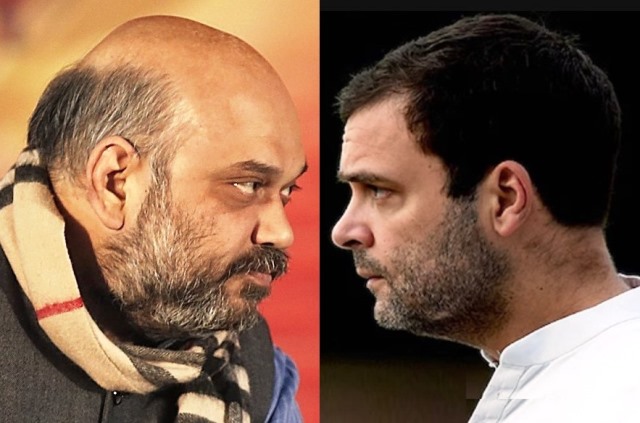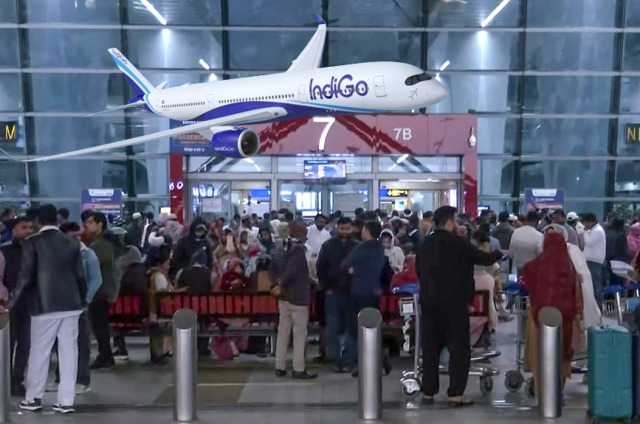Will Lok Sabha Polls 2019 Be A Referendum On Modi?
The world’s largest democracy, a major economy but by no means prosperous, India is also the most expensive when holding its elections.
Its 2014 democratic exercise cost as much as the United States’ 2012 presidential elections, when Barack Obama was re-elected. The one beginning next month, estimated by New Delhi-based Centre for Media Studies, may cost $ seven billion, or INR 50,000 crores.
Another calculation by political scientist Milan Vaishnav is of a whopping $10 billion, based on growth in expenditure incurred for two polls conducted in 2009 and 2014. The US spent much less, $6.5 billion while electing Donald Trump in 2016.
These huge sums do not come only from the state that funds conducting of the polls. Contestants receive contributions, overt and covert, from businesses, corporate sector and the untaxed and largely invisible farm income. Experience shows that they are made with the understanding that the next government will tweak laws to help recover that money. This breeds corruption.
Should such an expensive exercise be a cacophony that it now seems?
With three weeks to go, the air is thick with hyper-nationalistic fervor triggered by last month’s terror attack in Kashmir followed by India-Pakistan aerial stand-off.
Tensions have subsided but not really ended. Speculation persists over its resumption, should there be another incident on the border or in India-controlled Kashmir. Such eventuality, assuming the world community (mainly the United States) is surprised again, is certain to sweep all other issues out of the polls.
Leaving aside madcaps (there are some on both sides of the Indo-Pak border) who think that India engineered the Pulwama attack, it seems god-sent for Prime Minister Narendra Modi’s government and the ruling alliance.
To his credit, Modi did act tough, defying the nuclear threshold that has prevented a larger conflict, but not stopped Pakistan from using its so-called “non-state actors” for staging terror attacks. This was something his predecessors Manmohan Singh (in 2008 Mumbai terror attacks) and Atal Bihari Vajpayee (Kargil-1999, and attack on Indian Parliament-2001) had not. Modi then swept the nation mounting an “I will not let the country down” campaign, converting the polls campaign into one referendum on national security.
His party, its ideological affiliates and a huge army of cyber warriors troll anyone critical of security lapses and/or seeking details of what precisely happened on the border.
The elections are now divided pre and post-Pulwama. The opposition is on the back-foot. As loyalty to the nation of those who ask questions, howsoever legitimate, is questioned, undoubtedly, this means political/electoral gains and losses.
People across the spectrum — media, academics and security experts among retired soldiers and diplomats – even individual families – are divided. Some ruling alliance stalwarts have gleefully given themselves more seats than they hoped to win earlier in parliament and state legislatures thanks to the border incidents. With Modi being projected as the superhero pandering to popular yearning of a strong leader, the pitch is queered against the opposition.
However, past electoral outcomes have been mixed and indicate that there are limits to all this. For one, Kashmir and war with Pakistan do not resonate in India’s south as they do in the north and the west. Polls were won after conflicts, but not swept, be it in 1971 when Congress’ Indira Gandhi helped breaking-up of Pakistan and emergence of Bangladesh. BJP’s Vajpayee got the same numbers after the Kargil conflict in 1999.
Electoral verdicts do not always match popular sentiments. The BJP lost in Uttar Pradesh 11 months after its cadres demolished the 16th century Babri Masjid in 1992. And although it dubbed Manmohan Singh India’s “weakest prime minister” and BJP veteran L K Advani used the pejorative ‘nikamma’ (hopeless) after the terror attacks in Mumbai in 2008, the Congress improved its parliamentary majority and Singh got a second term.
But popular sentiments yielded results post-“surgical strikes” in Kashmir in 2016 by Modi Government. The BJP swept the polls in Uttar Pradesh despite the miseries caused by demonetization of the currency. Political engineering helped consolidation of the majority community’s vote at the expense the minority Muslims.
Most populous UP is the principal battleground now where the BJP is being seriously challenged by Samajwadi Party and Bahujan Samaj Party. Credible reports indicate that the Modi campaign is working. That 11 of the 44 soldiers who died in Pulwama were from the state matters. But, this is as-of-now, since the difficult-to-fathom public mood can change. And none can fathom how the rural mind, in UP and elsewhere, perceives these polls.
Arguably, the public at large is more worried about dal-roti. If it is looking for options other than Modi, it doesn’t find credible faces among the opposition. What began as Modi-versus-the-rest effort has stuttered. Some contenders have emerged following state-level alliances, but a credible national alternative is absent.
The communists who forged alternative fronts in the past, providing political edge by helping formulate socio-economic common minimum programme have become irrelevant.
Next, the Congress has failed to accept allies and also being acceptable as a key opposition driver. Its alliance-making is non-starter. Its past gives it a misplaced sense of entitlement. Rahul Gandhi, despite his belated surge at the national level in the last one year and winning in three key states, cannot match up against the prime ministerial ambitions of numerous state satraps.
The impact of its ‘brahmastra’, the most potent weapon Priyanka Gandhi, will be known only when results are out. Rahul’s Ailing mother and former party chief Sonia is contesting to save her turf. Those who yearn for Congress’ return, if only as a lesser evil, may be in for a disappointment.
The Pulwama plank seems to have stonewalled the Rafael deal debate. It also excludes any discourse on day-to-day issues, especially on the troubled economy. The government version dominates through its massive propaganda machinery. Bulk of the media, both mainstream and social, the key urban drivers, are divided on pro and anti- government lines.
Politicians are generally not economists. And even if they are, they remain politicians first. Modi too is a politician, and a good one at that. All his major moves are politically motivated. His deft political engineering, now topped with “Pulwama patriotism”, has muted discussion on unemployment with job growth at its lowest in 40 years after statistics officially put out but discredited by the government itself.
His government continues to project demonetization of 86 percent of the currency notes three years ago in terms of curbing black money and denial of funds to militant bodies, when subsequent indicators have shown otherwise.
Falling exports have yet to catch up the 2013-14 level. Industrial growth in January slowed down to 1.7 percent compared to the 2.6 percent in factory output in December last year. The GDP remains under-7 percent.
Equally serious is the farm distress. Thousands unable to repay debts have committed suicide. Minimum support price for farm produce and waiving of farm loans have come too late in the day. Low inflation has been driven by falling food prices, cutting farmers’ incomes and pushing up debt levels. About 800 million depend on farming for their livelihood.
With Saudi Arabia, the largest source, committed to production cuts to keep crude oil prices low, it seems unlikely that India’s fuel and energy costs, a key factor for the economy, will stay soft for long. And with political parties opening the spending spigot in a bid to woo voters, inflationary impulses will quicken.
Modi remains way ahead of his rivals. But there is a risk to democrcy. Political analyst Vijay Sanghvi says Modi has isolated himself thanks to his governance style. “He has reduced the status and stature of every minister and party leader. No one informs him of rampant growth of corruption at lower levels. Unemployment is more hurting as low grade jobs are lost.”
The newest campaign slogan “Modi Hai toh Mumqin Hai” (It’s possible with Modi) reinforces this and places him as the centerpiece of a nationwide campaign.
This election is for the soul of India and its pluralism. But it would also be a referendum on Modi.
The writer can be reached at mahendraved07@gmail.com



